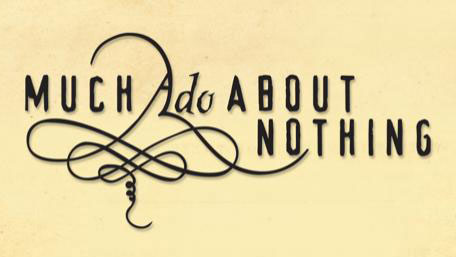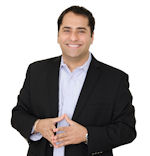
by Vikram Singh
Over the past few months, there has been a lot of talk about the imminent “end of hotel rate parity” and what it means for the hotel industry. Rulings in favor of ending rate parity clauses have been handed down by regulatory bodies in France, UK, Sweden and Italy. (Rate parity is the practice of maintaining consistent rates for the same product in all online distribution channels—Expedia, Priceline, etc.—regardless of what commission the OTA makes.)
The reactions to a scenario in which rate parity will not be required or enforced have ranged from “OMG! This is the greatest thing ever!” to “This will destroy the OTA’s!” to the proverbial “Meh.” Some industry veterans have declared it to be a “revolution” or – even worse – have employed one of my least favorite phrases in the English language – “game changer.”
I recommend putting jubilation on hold if you’re anticipating the quick death of OTA’s and the beginning of a new era of tremendous profitability for hotels. Some may believe that that the duopoly of Expedia Inc. and Priceline Inc. were built on the simple and magical hotel rate parity clause, and that they will perish without it. In response, I’d like to offer a gentle reminder:
The market cap of these companies as I wrote this article today:
- Expedia Inc. – $15.87 billion
- Priceline Inc. – $66.49 billion
(Source: Yahoo Finance)
The Myth of Hotel Rate Parity as an Obstacle to Profitability
Rate parity agreements put in place by OTA’s were never fully implemented by independent hotels. The complex distribution structure of an independent hotel operating in the real world made it impossible. Brand hotels have probably done a better job at implementing rate parity across their thousands of hotels. Even then, rate parity is just not that easy to implement and control.
Smart asset owners and managers devoted very little time to this clause in their OTA contract. Instead they focused on getting the most out of the OTA’s and building their direct revenue. On the opposite end of the spectrum were people who ran around in circles worrying about maintaining parity like it was life and death. Just recently I had to console a very concerned Director of Sales who would freak out every time he looked at the rate plan, yelling “What about rate parity?”
Rate parity is, and never will be, a “gun to the head” for hotel revenue managers or owners. Rate parity has not prevented independent assets from building direct revenue, nor does its demise automatically supercharge their revenue. I’ve worked on asset turnarounds totaling over $1.5 billion over the last decade; rate parity has never once been a factor that kept us from reaching our revenue goal.
It’s actually pretty simple. Hotel and lodging business managers who have not 100% outsourced their reading, learning and critical thinking are profitable today, and will stay profitable when the rate parity clauses go away. Rate parity, whether it’s in place or not, doesn’t override the many other important decisions that drive profit.
Some people are so excited about this development, they tout it like it’s the beginning of a phenomenal new age in travel and distribution. This is not the launch of the iPod, iPhone or i iPad, and we are not at the Apple developer conference.
This Changes Everything… Not.
Rate parity was not holding you back from taking control of your distribution and profitability. A new channel manager software is born every week. You always had the power to set your distribution priorities, and you will still have that power in the future.
The fact remains that if you still have not convinced your guests that your own website is the best place to book, it’s a failure of your online marketing and distribution strategy. Giving so much power to an OTA, and a clause in their contracts, is the very reason a lot of hotels are struggling today to build direct revenue. That, and the fact that their marketing department does not really do any work but totally excels at “vendor management.”
The OTA duopoly of Expedia and Priceline has been actively focusing on owning the travel cycle. From planting an idea (inception), to research (content), rate search (metasearch), transportation, things to do, and loyalty points and rewards.
Controlling and Contributing to the Travel Cycle
To think of rate parity as the pillar on which the OTA’s have built their revenue and profitability is flawed. The key to their success is their unflagging commitment to investing online, which is where people are researching, dreaming and shopping travel. In complete contrast, a Hotel Brand’s # 1 prime objective is to build the “brand” to collect brand licensing fees. That’s the revenue that impacts their share price.
Controlling and contributing to the travel cycle has never been part of the brand hotel’s master plan. Hiring expensive ad agencies to stay current with the latest marketing fad seems to be the modus operandi for most of them. You see, perception rules everything around them. It’s never online revenue or their guests’ ever-expanding needs, you know, like fast and free WiFi.
Smart hospitality asset owners recognize that their guests’ needs are basic and evolving at the same time. They are creating their own brand loyalty by doing more for their guests and ensuring repeat business via engagement.
Instead of worrying about parity, extreme channel management tools, and data overload, how about you shift focus to the guest and their travel cycle? Just like the OTA’s. Here are some things that should be happening in your hospitality business right now:
Looking Beyond Hotel Rate Parity Games
Diversification
The guest and their travel cycle needs to be your focus. Diversify your efforts and instead of just thinking of them when they are ready to book a room, think of them in different stages of their travel from their home to your hotel. As the asset owner/manager even with all the online tools available to them – You can still can solve a lot of issues for your guests and build a relationship with them beyond “Book Now” button. This relationship ensures that they take your word for the Best Rate Guarantee and book direct with you irrespective of where they are researching airfare, activities and transportation.
Using a CRM (Customer Relationship Management) Tool
Every hotel today has some sort of a CRM system, but very few actually use it. Nameless, faceless throwing of room keys at your guests at the front desk has to stop. Reaching out to your guests (establishing a relationship) and then staying in touch (relationship management) has to start.
Robots will not build relationships (unless you are watching Terminator 2: Judgment Day). Not staying in touch and not keeping track of your guests drives them to channels that offer a better travel experience and better support. Hotels that truly connect with their guests, and provide what their guests crave (information, support, service, appreciation) are the ones who will continue to build profitability.
Hotel parity is another red herring preventing you from truly building your hotel’s long-term profitability. Even if hotel rate parity were to disappear overnight, thousands of hotel CRM tools would still be collecting dust. Sales Directors would still be outsourcing strategy and marketing to agencies who service hundreds of clients, including their own competitors. Hotel websites would still lack fresh content, and offer guests a substandard booking experience. Your front desk staff would still not recognize loyal guests, and would still fail to encourage them to spend more at your hotel via special dining or activity promotions. Need I go on?
Conclusion
If you are obsessed with rate, you are bound to neglect a lot of important work that needs to be done. You can quote me when I say, ” If you live by the rate, you die by the rate.”


